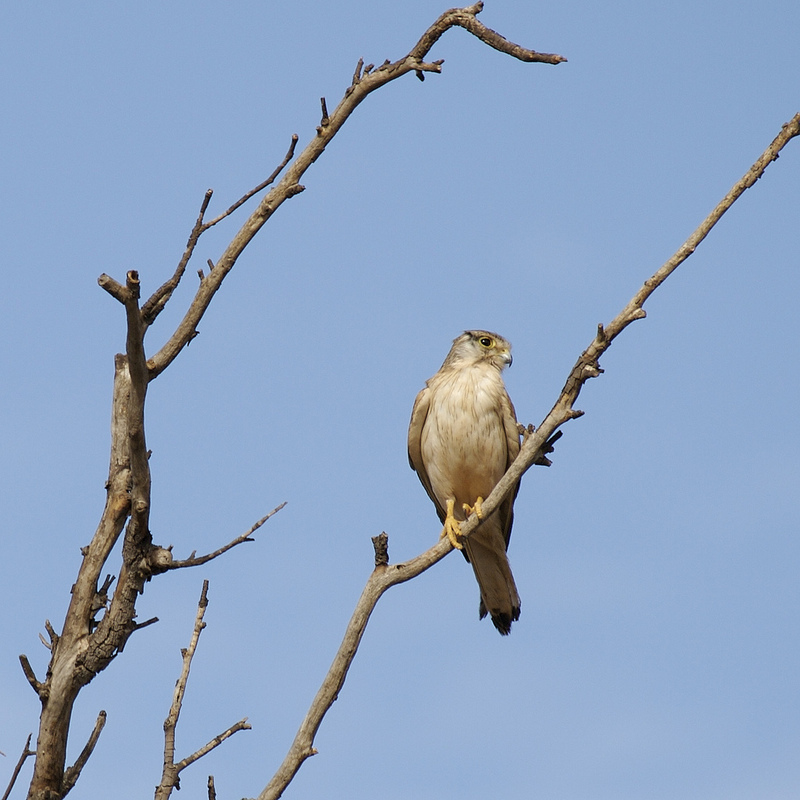|
| 질의: description | 결과: 9540번째/10150 | |
Grey Falcon (Falco hypoleucos) - Wiki
| 제목: | Grey Falcon (Falco hypoleucos) - Wiki
| |

| 해상도: 1024x1024
파일크기: 337152 Bytes
등록시간: 2007:12:06 16:01:14
|
Grey Falcon
From Wikipedia, the free encyclopedia
Order: Falconiformes
Family: Falconidae
[Photo] In Roebourne, it was the hottest place in Australia (46 degrees C). Nearby in Cheeditha community, this grey falcon sat in a tree. (Falco hypoleucos). Source: Flickr (www.flickr.com/photos/warpedtime/2049170755/). Date: November 20, 2007. Author: warpedtime (www.flickr.com/photos/warpedtime/).
The Grey Falcon, Falco hypoleucos, is a rare medium-sized falcon, one of the enigmatic ‘mystery’ birds of Australia, neither easily nor predictably seen.
Description
Mainly grey upperparts and white underparts; darker on the tips of the flight feathers; yellow cere. Body length 30-45 cm; wingspan 85-95 cm; weight 350-600 g. Females larger.
Distribution and habitat
The Grey Falcon is an Australian endemic, usually confined to the arid inland. Open country: Triodia grassland, Acacia shrubland, and lightly timbered arid woodland.
Conservation
It is found at very low densities, numbering only 1,000 breeding pairs, and the population may be stable. Continued high levels of grazing in arid zone rangelands and clearance of the semi-arid zone for marginal farming is degrading habitat.
International
It is considered to be Near Threatened. Listed on CITES Appendix II.
Australia
Grey Falcon are not listed as threatened on the Australian Environment Protection and Biodiversity Conservation Act 1999.
State of Victoria, Australia
The Grey Falcon is listed as threatened on the Victorian Flora and Fauna Guarantee Act (1988). Under this Act, an Action Statement for the recovery and future management of this species has been prepared.
On the 2007 advisory list of threatened vertebrate fauna in Victoria, The Grey Falcon is listed as endangered.
Behaviour
Diet
Mainly birds, especially parrots; also small mammals, reptiles and insects.
Nesting
Nests in trees, utilising stick nests of other species. Clutch size 2-3.
http://en.wikipedia.org/wiki/Grey_Falcon
| The text in this page is based on the copyrighted Wikipedia article shown in above URL. It is used under the GNU Free Documentation License. You may redistribute it, verbatim or modified, providing that you comply with the terms of the GFDL. |
|
^o^
동물그림창고 똑똑전화 누리집
^o^
|
|